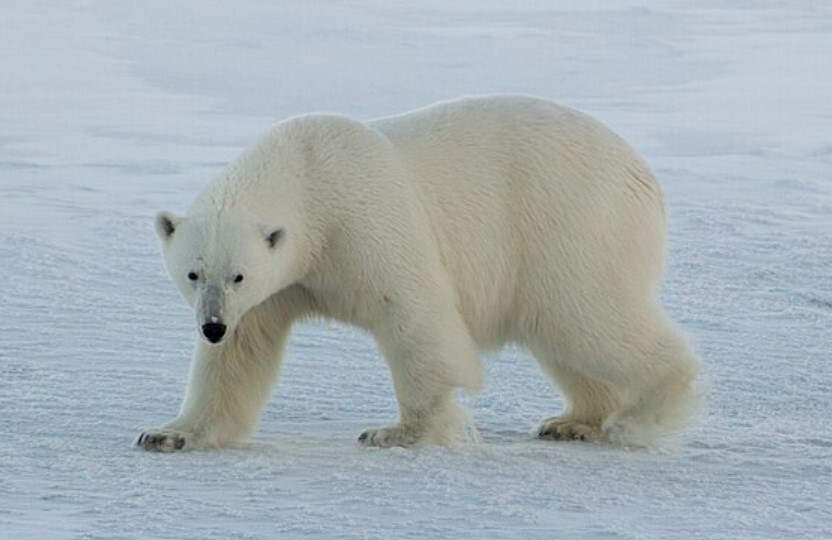The Earth’s Great Bear Coincidence
Pictured above is a polar bear. And if you come across one in the wild, you’ll know roughly where you are — you’re somewhere in, or at least very near, the Arctic Circle. And, despite the icy terrain and inhospitably cold temperatures, you can also be certain of where you are not: Antarctica. Despite the similarities of the North and South Poles and surrounding areas, the two have one notable difference: polar bears live near the North Pole but don’t go anywhere near the South one.
And if you have trouble keeping those poles and polar bears straight, he’s an easy trick: the bear population is right there in the regions’ names. Kind of.
Polar bears are built for the cold — they have thick fur over black skin, the latter absorbs and retains heat well. Beneath that is a layer of blubber about ten centimeters thick, which provides extra warmth and doubles as caloric storage for when food is scarce. Their paws act as snowshoes and can grip slippery surfaces. So it makes sense that they hang out near the North Pole.
The same should hold true for the South Pole, but you won’t any polar bears there. There are two main reasons for that. First, as Live Science explains, there’s no real way for them to get there: “there was never a time in their evolutionary history when the North and South poles were connected by ice (or land, for that matter),” and while polar bears are good swimmers, they still need to go onto land to breed. And it’s simply too far for them to swim from pole to pole. Second, there’s really no reason for them to migrate, anyway — there’s plenty of food for them in the Arctic Circle, but the stuff they eat (typically ringed seals) aren’t found in the Southern Hemisphere. (Not that the polar bears would know that.)
So, to recap: Arctic = bears. Antarctic = no bears.
And if you knew how to speak Greek, you may have known that already. As it turns out, the Greek word for “bear” is ἄρκτος, which is typically Anglicized as “arktos.” The word “Arctic” comes from the Greek word ἀρκτικό (“arktikos”), which means “near the bear” or “near the bear in the north.” “Antarctic” doesn’t require any knowledge of Greek — the prefix “anti-” typically notes that the term has an opposite meaning of its base, and this is not an exception: “Antarctic” means that it’s not the place near the bears. The two cold, remote regions of our shared planet are, quite literally, named for where you can find the bear there.
But the bear the Greeks were talking about weren’t polar bears — they were celestial ones. Specifically, ἄρκτος is a reference to Ursa Major, the constellation also known as the Great Bear (and the Big Dipper). It is visible throughout most of the year in the Northern Hemisphere but is not visible in the Southern Hemisphere. “Arctic” means “you can see Ursa Major” there; “Antarctic” simply means “the opposite of Arctic.” The name has nothing to do with polar bears. The fact there are no earthly bears in the latter, but plenty in the former, is just one weird — but, if you can’t remember where polar bears live, useful — coincidence.
Bonus fact: Polar bears can probably see better than we can. As the Alaska Department of Fish and Game explains, bears (not just polar ones) “Like many animals, bears’ eyes have a reflective layer called the tapetum lucidum lining the back of the eyeball. This layer reflects light back through the retina, allowing light to stimulate light-sensitive cells in the retina a second time, thereby improving night vision.” And the polar bear’s eyes go even further: “Polar bears have special adaptations that help them to see underwater. Like many other marine mammals, they have a clear inner ‘eyelid’ called a nictitating membrane that protects their eyes and serves as a second lens when they are underwater.”
From the Archives: Losing the Htrkos in the Woods: The etymology of the word “bear” is a byproduct of taboo.

